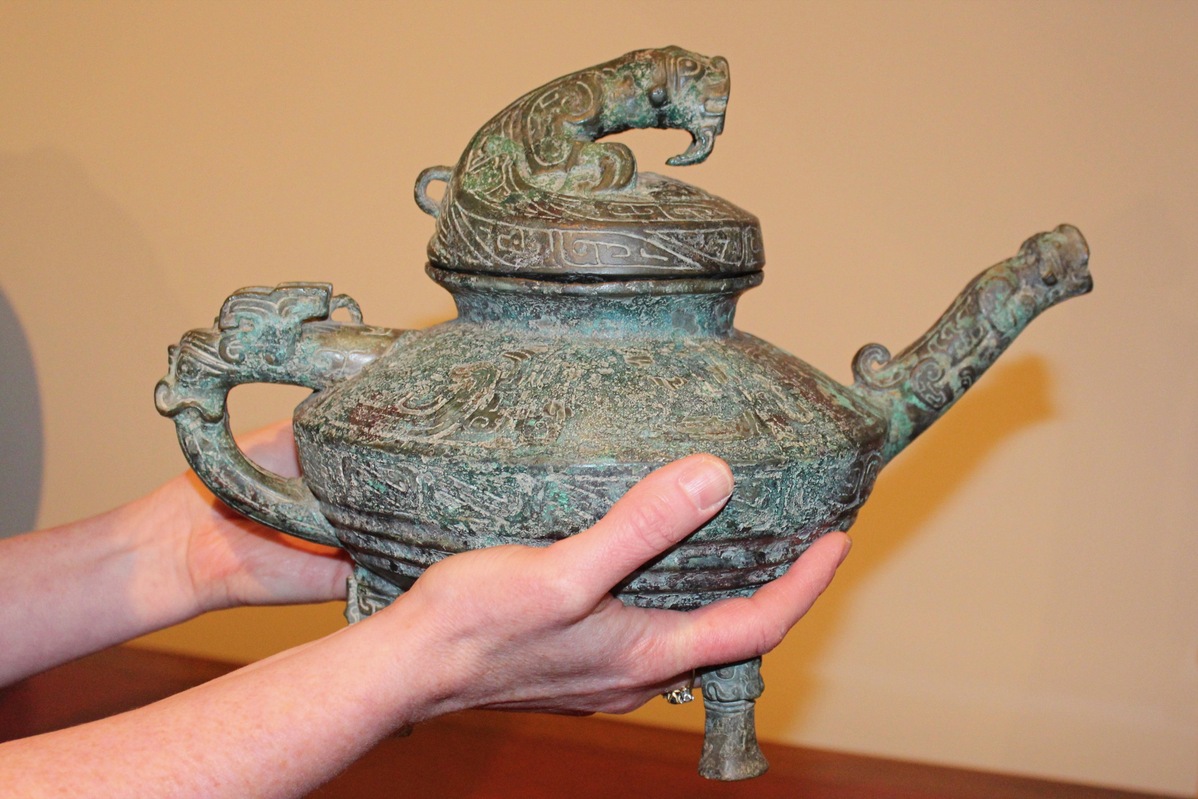Bronze relic looted from Summer Palace to be auctioned


Big price expected for incredibly rare item
A rare Chinese bronze water vessel believed to have been taken during the looting of Beijing’s Summer Palace in 1860 has been discovered in Kent, southeast England.
The relic will go on sale at The Canterbury Auction Galleries on April 11 with an estimate of 120,000 to 200,000 pounds ($170,000 - $285,000).
According to the auction house, only six similar archaic vessels, known as Ying, are said to exist, and five of them are in museums.
China’s State Administration of Cultural Heritage said in a statement that it is looking into the auction and added it opposes the sale and purchase of illegal cultural relics.
The vessel dates back to the Western Zhou dynasty (1027-771 BC). It is called the Tiger Ying because the spout and lid are both cast with models of the creature.
The vessel is described as sitting on "an Imperial Qing Dynasty Zitan trefoil stand, with stylized archaistic scrollwork and taotie-mask inspired bracket feet".
Three other later Qing dynasty bronze works of art were also found by the saleroom’s consultant in Chinese art, Alastair Gibson.
“When I was asked to view a small collection of Chinese bronzes in this unassuming house, I didn’t imagine the door would open to an 1860s time capsule,” he said. “The last thing I expected to find was this remarkable bronze.”
Gibson said that there is nothing else comparable to the Tiger Ying in today’s market.
“Only one Ying has ever been offered at auction before and none of the five others known is modelled with what in Chinese art is considered the king among beasts and the most powerful animal for warding off evil,” he said.
A thermoluminescence test on the pottery core of the handle and one foot was done in Oxford, determining the age of the bronze vessel to be between 2,200 and 3,500 years old.
The Summer Palace was looted and destroyed by British and French troops during the Second Opium War (1856-1860).
Also discovered along with the bronze Ying was an archive of photographs and notes relating to the war, written by Royal Marines Captain Harry Lewis Evans (1831-1883), who fought in the war and was present at the looting.
Before arriving in Beijing, Captain Evans took part in the capture of Canton in 1857 and was slightly wounded in the failed attack on the Taku Forts at the mouth of the Pei-ho River in 1859.

































